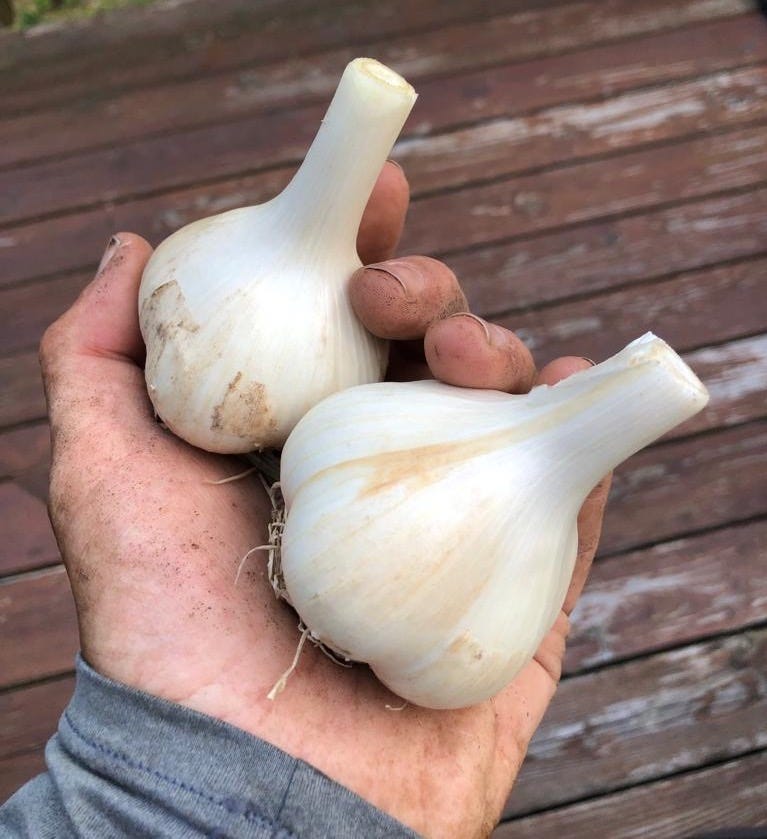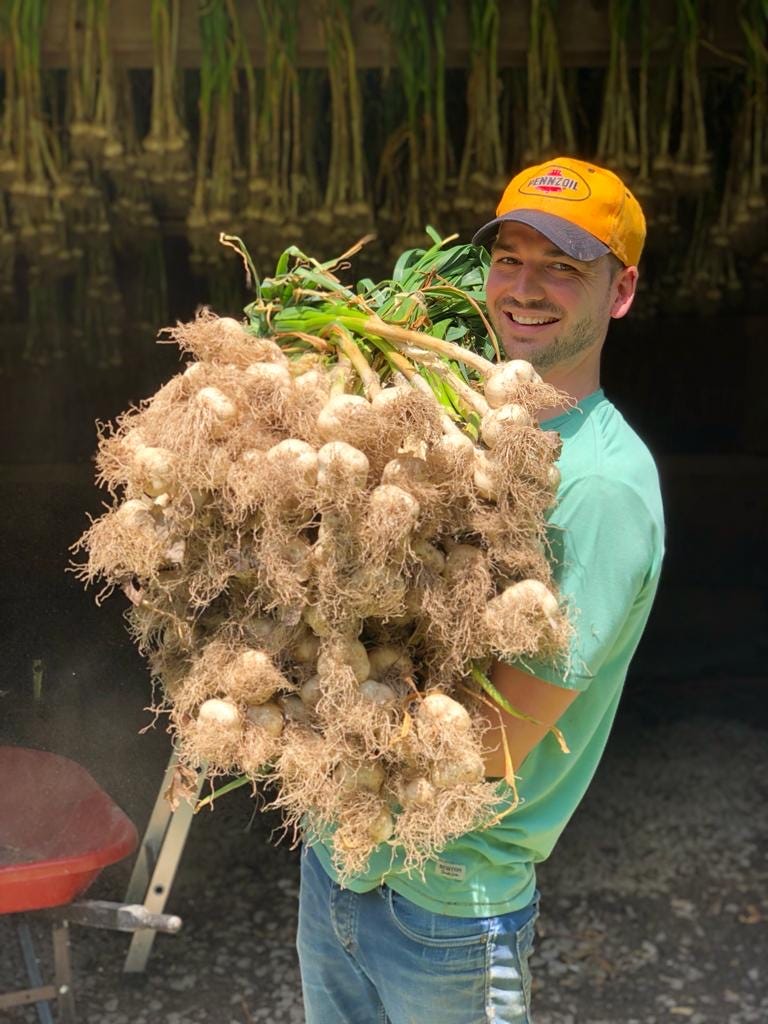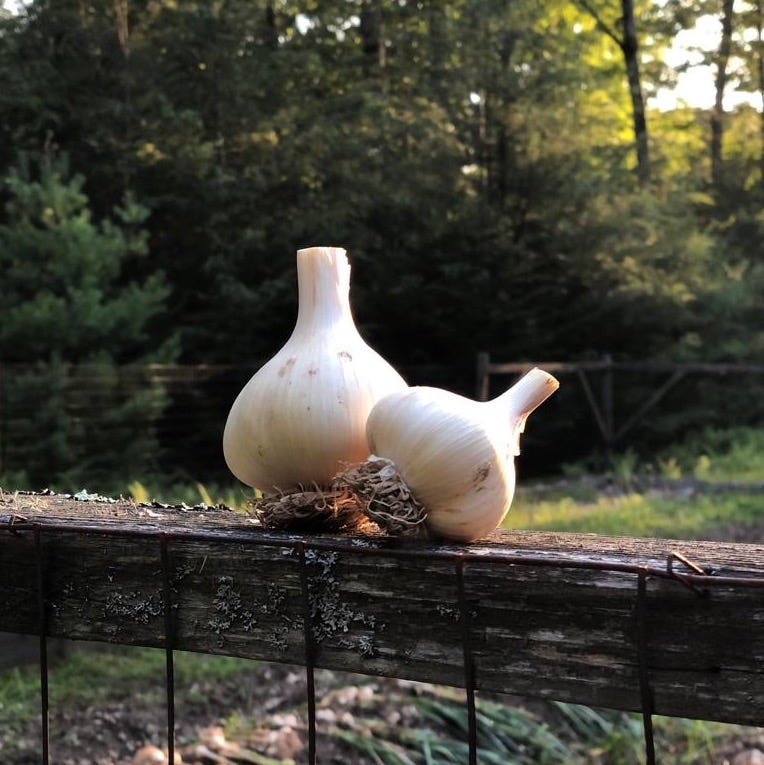Sometimes an ingredient is so ubiquitous that you forget how important it is in cooking. Garlic appears in cuisines worldwide, yet most of us know surprisingly little about this pungent bulb that has permeated almost every culinary culture.
The Paradox of the Pungent Bulb
For a long time–maybe since before time–garlic has been both celebrated and reviled. Civilizations the world over consider it a source of medicinal magic. It has warded off vampires, treated the plague and high cholesterol, and was the first performance enhancer for ancient Greek athletes.
Buried in the tombs of Pharaohs, fermented into qi-invigorating elixirs in China, and decorating elaborate Slavic harvest costumes, this herb gets around.
But this same aromatic bulb also carries a dark history of bigotry and social division. Robin Cherry’s Garlic, An Edible Biography delves a little deeper into this double life, with the Romans calling Jews "garlic eaters" as early as the first century CE. Despite their own love of all things allium, they didn’t mean this as a compliment. Americans retread the insult in the 19th century, targeting Italian immigrants for being unassimilated. Even today, class connotations persist. In France, Parisians often criticize the overuse of garlic, relegating it to their southern provincial counterparts.
What Is Garlic Botanically?
Garlic (Allium sativum) belongs to the genus Allium, which includes onions, leeks, chives, and shallots. Botanically speaking, the distinction between these plants is so loose that elephant garlic, often sold in specialty grocery stores, is actually not garlic at all but technically a leek.
The word "garlic" comes from Old English garlēac, meaning "spear-shaped leek," and the plant fits the description. It's a flowering herb that grows from a bulb composed of 10 to 20 cloves. Most of the bulb sits underground, with only slender leaves growing above the surface. In late spring, hardneck varieties produce a flower stem called a "scape," which is then topped with a spherical white or pink flower in summer.
Garlic varieties have evocative names like Porcelain, Music, Turban, and (my favorite) Rose du Lautrec. Others conjure up exotic locales: Carpathian, Persian Star, Samarkand, Georgian Crystal, Cuban Purple. All of these varieties fall into two main groups:
A. sativum var. ophioscorodon (hardneck garlic)
A. sativum var. sativum (softneck garlic)
The People Behind Your Bulbs
If I wanted to learn more about cultivating garlic, I figured I needed to speak to a garlic farmer. Luckily I know two:
made an unlikely transition from Wall Street Trader to Hudson Valley Farmer during the COVID pandemic. Like many reformed corporate types, he found himself drawn back to his agricultural roots—his great-grandparents were Ohio farmers, and childhood visits to his grandmother's six-acre farm had planted a seed so to speak.Travis and his wife Rosalynd bought their own six-acre plot in Summitville, NY in 2021. Garlic wasn’t the original goal, but after a disastrous first farming season trying to grow everything from edamame to cantaloupe, they realized that the bulb is rather forgiving. Now Travis grows about 1,600 hardneck garlic plants on his property, supplying area restaurants. His big selling angle is that he offers local chefs the flower stems, or scapes, for free when they purchase. Turns out they taste a bit like green beans and there are lots of ingenious ways to cook them.
My other farming friend, Marshall Berg of Hillsboro, NM is best known for growing green chilis and his very popular Los Roast Green Chili Sauce (future story on that for sure). But in the off season, which is fall and winter for New Mexico chili farmers, Marshall plants a local softneck garlic varietal that has been passed down through the farming community for generations. New Mexico has a rich garlic-growing tradition—Stanley Crawford, who wrote the acclaimed Garlic Testament among a whole library of works, has been cultivating garlic in the region for decades. Crawford's book is now on my summer reading list.
Marshall has expanded his operation to about four acres, a small section of his much larger chili operation. He also grazes free-range goats on the property, and it turns out garlic is one thing they don’t like to eat. So Marshall lets them wander through the rows to keep down the weeds.
Both farmers were fascinated with the fact that garlic has lost one of the most basic botanical functions, the ability to produce fertile seeds. In fact, some have even forgotten how to flower all together.
“If everyone in the world didn’t grow garlic for like two years, we’d run out of the stuff,” says Marshall.
As a result, farmers must save some of their previous year’s crop to plant the next.
“We always take the best garlic from last year and save it for the next season,” says Travis.
New plants spring up from the very same cloves we plop into our favorite pasta sauces. So if you want to keep garlic thriving, do your part when you buy a head of garlic and throw one clove in a flower pot or backyard garden, just in case.
It seemed to me that neither gentleman really chose to farm garlic. Instead, it seems the plant picked them. It’s relatively forgiving, works well in many different climates, and small scale production can be rather profitable. Makes you wonder why more farmers aren’t growing this fragrant cash crop all over the country.
The Great Garlic Divide
More than 90% of all garlic grown worldwide now comes from China, and the majority of that is one of a handful of softneck varieties. In the US, nine out of ten garlic plants are also softnecks. This is because they tend to be milder in flavor, capable of year-round cultivation, and store for at least 12 months without spoilage.
Travis, in his more wintery northern region prefers the hardneck variety. Because of its shorter growing season, hardneck garlic seldom finds its way into your local grocery stores. The tough central stem–from which the name is derived–complicates mechanical harvesting and processing. And it also has lower yields per acre.
"Hardnecks have rich, complex flavor profiles,” explains Travis. “It’s denser with allium oil.”

Marshall prefers the softneck because it’s more heat and drought resistant, important to his more southernly clime. For him, fresh and well cured garlic is the key to quality.
“Most young garlic right out of the ground is more water than oil,” explains Marshall. “It’s got an almost wasabi-like zing to it. But all garlic is best after it’s cured.”
He harvests the garlic in May or June–leaving plant and root still attached. Then the garlic hangs for a couple of weeks, allowing all the energy to concentrate into “cured” bulbs. This also lets the outside skin develop that papery protective texture that keeps them safe for long-term storage.
Pro Tips and Trade Secrets
After spending hours talking with Travis and Marshall, I realized I'd been treating garlic all wrong. These guys don't just grow it—they live it, breathe it, and have solid opinions about everything from storage to peeling techniques. Here's what their garlic obsession taught me.
Proper Storage and Handling
Travis says to keep it simple: Room temp in the dark with a towel over it. Used within 4-6 months for hardneck, 6-12 months for softneck. Don't ever refrigerate your garlic; it will actually encourage sprouting.
Marshall goes the powdered route. Most home chefs dismiss the stuff, but that's because store-bought powder can be 20 years old! Make your own by crushing the garlic, throw it in the dehydrator on low for a day, blending up the “chips” in a spice grinder, and Voilà!
Enlightened Omnivore: I like to store mine under the sink in a small bin with lots of air holes. A nylon bag (reused from my weekly avocado purchase) works well to keep all the loose cloves from slipping through the cracks.
How to Skin a Clove
Travis prefers the Smash and Dash: Smash the clove with the side or back of your knife, then finish chopping with the blade. For peeling lots of garlic, use the flat side of a knife to smash cloves—the skin comes right off.
Marshall is more of a Traditionalist. When he’s not using the purpose built machines to skin his crop, he likes to cut that little flat base off the bottom. Once it’s gone, cloves peel like a banana.
Enlightened Omnivore likes the Garlic Maracas technique. Put a bunch of individual cloves in a jar or bowl with a lid and shake vigorously like Carmen Miranda for 20-30 seconds. Chica Boom!
What about Garlic Breath?
We all agreed that the biggest concern cooking with garlic is the halitosis. The biggest culprit is allicin, a sulfur compound formed when garlic is crushed or chopped. This same compound creates garlic's distinctive smell. But garlic breath isn't just about close contact. Allicin is also absorbed into your bloodstream during digestion, and eventually reaches your lungs where it’s exhaled with each breath. This is why garlic breath can persist for hours even after brushing your teeth—it's literally coming from inside your body.
Minimizing the Aftermath
Marshall shares that garlic breath is strongest from raw cloves. Apply it early in the cooking, and for longer so that those allicin compounds break down well before eating. But he admits that’s giving up the best part.
Travis is all about chopping, never crushing his garlic. That’s why he NEVER uses a garlic press that excessively squeezes out more of those halitosis-causing allicin oils.
Enlightened Omnivore removes the allicin-packed green center of the clove before cooking; I also chew on a healthy bunch of fresh parsley, mint, or basil while I’m cooking. The chlorophyll from the raw leafy greens neutralizes allium oils.
A Bulb Worth Celebrating
Garlic is remarkably versatile and forgiving—perhaps the most user-friendly ingredient in your kitchen. As Travis puts it: "Garlic is super healthy, and you can eat 10 cloves a day and be totally fine. Have fun with it, experiment, don't be afraid to eat big chunks of garlic."
Whether you're roasting whole bulbs until they're sweet and spreadable, stuffing them into a chicken before it goes into the oven, or simply mincing a few into your pasta sauce, garlic rewards bold use.
This ancient bulb is a survivor. It’s welcomed praise, weathered persecution, and transcended class divisions and cultural boundaries. It’s become one of our most essential ingredients.
In a world where we've somehow managed to grow a plant that can no longer reproduce on its own, every head of garlic represents a gift of cultivation and care. So the next time you peel a clove, remember that this fierce little bulb depends entirely on us to survive—and we depend on it to make everything taste better.
—Scroll down to get the paid subscriber recipe—
And, if you happen to get your hands on some scapes, try my friend ’s latest creation—a scape kimchi that transforms those curly stems into something completely unexpected.
Let's stay connected:
📱 Follow along on Instagram and TikTok for video content, reels, and behind-the-scenes thoughts. I’m also on Facebook and LinkedIn.
🎧 Love the podcast? Please consider leaving a review wherever you listen. It helps so much.
✍🏼 Say hi on Substack Notes—I'm going to be posting more here about my daily reflections and thoughts on writing.
💬 Join me in Substack Chat. It's a space just for subscribers, kind of like a group text for this community. Download the app, tap the Chat icon (it looks like two speech bubbles at the bottom), and find the latest "Enlightened Omnivore" thread.
Garlic Confit: AKA Travis’ Garlic Spread
From Hudson Valley garlic farmer Travis Reichling
Keep reading with a 7-day free trial
Subscribe to Enlightened Omnivore to keep reading this post and get 7 days of free access to the full post archives.










